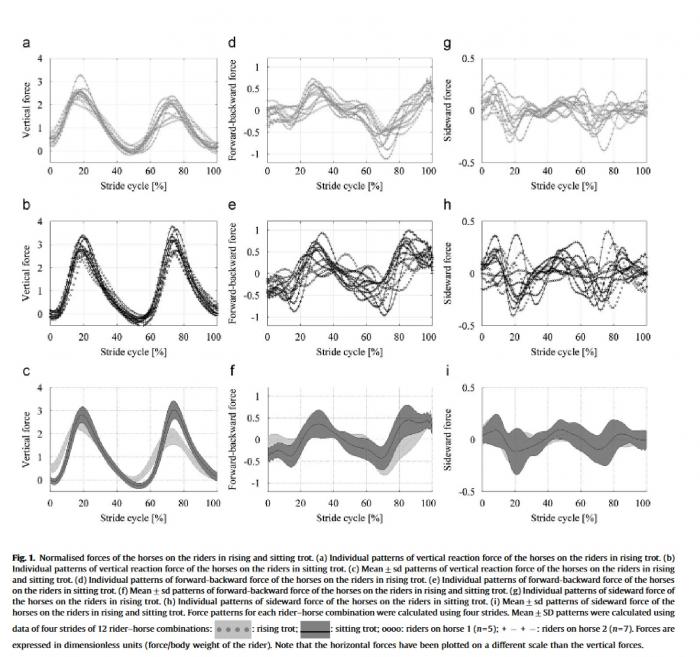
Vertical forces on the horse’s back in sitting and rising trot
The common opinion is that rising trot is less demanding for the horse than sitting trot. The objective of this study was to quantify the force on the horse’s back in sitting and rising trot by using kinematic data of the rider.
13 female riders (mean height 1,67±0.1m, mass 62±5,6) and two horses participated (8 and 24 years, 1,54 and 1,63m and 451 and 667kg respectively). Datacollection was done by using infrared cameras for 3D positioning and mathematical analysed by using i.e. Newton’s second law.
Sitting and rising trot on average didn’t differ significantly in average vertical force. Peak forward-backward and sideward forces were lower in rising trot compared to sitting trot, due to a decreased movement of the centre of pressure of the rider. This is also dependent on the type of horse (height, breeding, age).
During one stride a smaller and a bigger peak forces extensions are measured. The loading of the back in rising trot is less than in sitting trot. In other words: during peak extension of the horse’s back the load of rider’s weight is lower than during sitting trot. Also the vertical ground reaction force of the horse is increased during the sitting phase of rising trot compared to the rising phase.
> De Cocq, et al., Journal of Biomechanics, 2010 March 3;43(4):627-631. All rights reserved to 2009 Elsevier Ltd. Click here for the Pubmed summary


